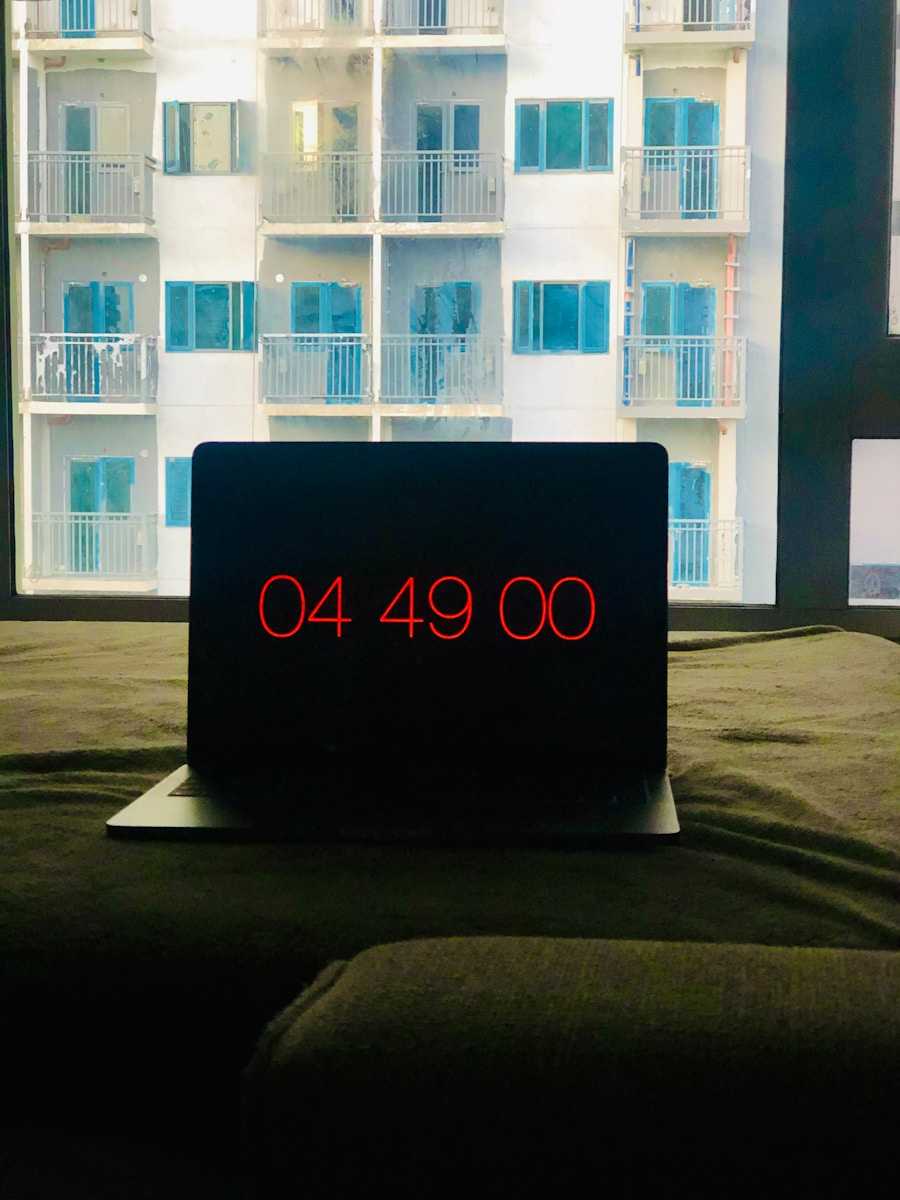The Solana protocol implements a cryptographic sequence that encodes the passage of time by generating a verifiable record using continuous SHA-256 hashes. This chain of hashes produces an immutable ledger where each output depends on the previous one, creating a strictly chronological order that can be independently verified without relying on external timestamps.
This approach transforms the measurement of elapsed time into a computational proof, enabling nodes to agree on the precise ordering of events before executing consensus mechanisms. By embedding temporal data directly into the hash sequence, Solana achieves high-throughput validation with minimal overhead, as verification requires only checking the integrity of the hash chain rather than waiting for network-wide coordination.
The resulting sequence serves as an unforgeable timeline that enhances synchronization across distributed systems. Each participant can quickly confirm when specific operations occurred relative to others through efficient cryptographic checks. This method not only accelerates transaction finality but also opens avenues for innovative blockchain designs where trust in event ordering is derived from mathematical construction rather than external clocks or protocols.
Proof of History: Time-Ordered Consensus
Verification of sequential events in distributed systems requires a reliable method to establish an unalterable order without relying on synchronized clocks. Solana’s approach employs a cryptographic sequence generated through repeated application of the SHA-256 hashing function, creating a verifiable chain that timestamps data and transactions. This method enables nodes to confirm the exact position of each event within a chronological framework, enhancing throughput by eliminating consensus delays caused by traditional timestamping mechanisms.
The core mechanism involves generating a continuous output from SHA-256 where each hash depends on its predecessor, forming a cryptographic ledger that encodes temporal progression intrinsically. By embedding transaction data into this hash sequence at precise intervals, it becomes possible to produce deterministic proofs that encode both occurrence and order, allowing network participants to authenticate event chronology independently and efficiently.
Technical Foundations and Implementation
Solana’s architecture leverages this sequential hashing technique as a foundational layer for synchronization across validators. Each node maintains this growing chain and compares received proofs against their local version to verify authenticity. Unlike conventional consensus protocols requiring extensive communication rounds for agreement on ordering, this cryptographic register reduces overhead by providing an immutable time reference embedded within the data structure itself.
This process can be examined experimentally by simulating hash chains with incremental inputs and verifying how insertion points map onto the evolving sequence. Such experiments demonstrate how slight modifications in input alter subsequent hashes dramatically, confirming collision resistance properties essential for security. The use of SHA-256 ensures compatibility with widely trusted cryptographic standards while achieving high computational efficiency suitable for real-time blockchain operations.
Consensus Integration and Performance Impact
Integrating this methodology into broader agreement frameworks allows Solana to achieve scalability unattainable by classical Byzantine fault-tolerant algorithms alone. Validators independently verify proof sequences before committing blocks, reducing latency inherent in multi-round voting schemes. Practical benchmarks indicate transaction processing speeds exceeding 50,000 per second under optimized conditions due to minimized coordination requirements enabled by chronological sequencing.
- Step 1: Generate initial seed hash using SHA-256.
- Step 2: Iteratively apply SHA-256 to previous output forming continuous chain.
- Step 3: Embed transaction metadata at specified positions within hash outputs.
- Step 4: Nodes validate incoming proofs against local sequences ensuring consistency.
Experimental Verification Strategies
A practical investigation involves constructing isolated test networks where nodes generate independent hash sequences incorporating mock transactions. By analyzing discrepancies or forks between sequences, researchers can identify synchronization issues or potential attack vectors such as replay or reordering attempts. Controlled experimentation reveals parameters affecting resilience including hash rate speed, network latency thresholds, and proof embedding frequency.
Scientific Inquiry into Chronological Ordering Assurance
The iterative nature of the hashing protocol invites experimental probing into its capacity to resist manipulation attempts seeking to reorder events retroactively. Given that each new output depends strictly on its immediate predecessor plus embedded inputs, reversing or altering earlier states demands infeasible computational effort due to preimage resistance inherent in SHA-256. This property forms the basis for trust in temporal integrity without reliance on external timing sources.
Pursuing further understanding could involve stress testing under adversarial conditions simulated via controlled node failures or malicious proof injections. Observing system reactions elucidates robustness thresholds and guides refinements aiming at minimizing vulnerability windows while maintaining operational efficiency.
Mechanics of Proof of History
To establish a verifiable sequence of events, the mechanism relies on a continuous cryptographic function that generates a unique output for each step, creating an immutable chronological record. This approach enables participants to confirm the order of data without requiring synchronized clocks, significantly accelerating transaction processing within the Solana network.
The process begins with a seed input passed through a SHA-256 hashing algorithm repeatedly, producing a chain of hashes where each output serves as the next input. This iterative sequence forms a historical ledger where every hash acts as evidence linking to its predecessor, ensuring tamper resistance and chronological integrity.
Sequential Verification and Network Synchronization
This method facilitates rapid verification because nodes only need to verify the final hash in the chain alongside a small subset of intermediate hashes rather than re-executing all computations. Consequently, validators can efficiently confirm event ordering and timestamps embedded intrinsically within the hash sequence.
Solana’s architecture leverages this design by embedding these outputs into its consensus protocol. Validators use them as timestamps proving when transactions occurred relative to others, thereby constructing an undeniable timeline that aligns all network participants despite potential latency or asynchronous communication delays.
- Each step’s SHA-256 output uniquely identifies its position in the sequence.
- The deterministic nature removes ambiguity about event ordering.
- Verification requires minimal computational overhead compared to traditional timestamping methods.
This system’s innovation lies in transforming time measurement into an intrinsic component of data validation. By treating sequential outputs as cryptographic markers, it replaces external clock dependencies with provable sequences that any observer can independently audit for authenticity and temporal consistency.
Integrating PoH with Consensus
The integration of a cryptographic sequence based on SHA-256 hashing into blockchain protocols enhances transaction ordering by establishing an immutable chronological record. This sequence generates a verifiable chain of hashes where each output depends on the previous input, creating an intrinsic timestamp without relying on external clocks. Such a mechanism facilitates efficient verification processes by providing nodes with a deterministic order of events, thereby simplifying the alignment of distributed validators around a unified timeline.
In systems inspired by Solana’s architecture, this continuous hashing sequence serves as an internal clock that enables rapid validation and synchronization among participants. The method leverages repeated SHA-256 computations to form a linked chain of data points, each representing a unique state in the ledger’s progression. Validators confirm blocks based not only on their content but also on their place within this immutable timeline, which reduces latency and increases throughput compared to traditional consensus algorithms that require multiple communication rounds.
The chronological arrangement enforced by this hashing technique streamlines conflict resolution during block production by embedding temporal context directly into the ledger structure. Since every event is tied to its exact position within the ongoing sequence, network nodes can independently verify transaction order without ambiguity or dependence on message timestamps from other participants. Experimental implementations demonstrate that such sequencing maintains high integrity even under adversarial conditions, as any deviation disrupts the hash continuity and becomes immediately detectable.
Practical investigations into combining this chained verification process with leader election protocols reveal significant improvements in scalability and fault tolerance. For example, when validators rely on the inherent sequence for timing assumptions, they can reduce communication overhead while preserving consistency across distributed environments. Future research could explore extending these principles to cross-shard operations or hybrid consensus models where sequential proofs complement other finality mechanisms for enhanced robustness.
Timestamping Transactions Process
Accurate ordering of transactions within a distributed ledger requires establishing a verifiable sequence that aligns with a strict chronological framework. This procedure relies on cryptographic methods to generate unique markers for each transaction, embedding temporal data directly into the chain of events. Solana’s architecture demonstrates this through its utilization of an innovative mechanism that encodes temporal information, allowing nodes to independently verify the order without depending on external timestamps.
Such an approach enhances verification by providing a deterministic method to confirm the position of each transaction in relation to others, reinforcing trust in the system’s integrity. Nodes can rapidly authenticate the correctness of incoming data by comparing sequential proofs embedded alongside transaction details. This continuous linking forms a reliable record that preserves the exact sequence of operations within the network.
Chronological Linking and Sequencing
The process initiates with generating a cryptographic output derived from previous outputs combined with new transactional data, effectively chaining events in one unbroken line. Each step produces a unique hash reflecting its place in time relative to all preceding entries, forming a tamper-resistant chronological trail. This ensures every node maintains a consistent and identical log without ambiguity regarding event placement.
Verification becomes highly efficient because each new entry references its predecessor’s cryptographic fingerprint, preventing reordering or insertion attacks without detection. By structuring data this way, systems like Solana circumvent traditional limitations inherent in consensus protocols that require explicit agreement on timestamps, instead deriving temporal ordering intrinsically from the sequence itself.
- Sequential hashing: Links transactions in an irreversible order.
- Self-verification: Enables nodes to validate transaction timing autonomously.
- Tamper evidence: Any alteration disrupts the entire sequence’s integrity.
This methodology supports high throughput environments by minimizing communication overhead typically caused by synchronization requirements among validators or miners. Instead of relying on external clocks or leader coordination alone, each participant can independently reconstruct the timeline based solely on embedded sequential markers.
The encoding of temporal context directly into transactional records fosters greater resiliency against adversarial attempts aiming to manipulate event ordering for financial gain or censorship purposes. Experimental implementations reveal measurable improvements in latency reduction and throughput scalability when compared to conventional timestamping frameworks dependent on global consensus rounds.
PoH’s Impact on Network Latency
The implementation of Solana’s method for establishing a sequence of events dramatically reduces network latency by eliminating the need for traditional timestamp synchronization between nodes. The core mechanism utilizes a continuous SHA-256 cryptographic chain that orders transactions in a strictly chronological manner, enabling validators to verify the order without extensive communication overhead. This approach allows the network to process thousands of transactions per second with minimal delay, as each new record inherently contains proof of its position within the established timeline.
Verification speed benefits significantly from this sequential structure. Nodes receive a verifiable sequence that is intrinsically linked through cryptographic hashes, removing ambiguity about transaction ordering. As a result, Solana achieves near-instant confirmation times compared to other distributed ledger technologies where consensus requires iterative message passing and complex leader election protocols. This reduction in inter-node messaging directly correlates with lower latency and increased throughput.
Experimental Insights into Chronological Ordering
Laboratory tests simulating high transaction volumes illustrate how embedding chronological markers via SHA-256 hashing accelerates state validation. By continuously hashing the output of prior computations, the system creates an immutable timeline that validators can reference independently. This eliminates bottlenecks associated with waiting for global agreement before moving forward. Experimentally, networks employing this design demonstrate sub-second finality under load conditions that typically cause delays in alternative architectures.
A practical example involves measuring network response when multiple nodes submit concurrent transactions. In conventional blockchains, conflicts arise requiring extensive conflict resolution steps; however, in Solana’s model, each transaction is assigned a unique position within the cryptographic sequence ahead of validation. Validators then focus solely on verifying integrity rather than ordering disputes, showcasing how historical sequencing improves responsiveness and decreases overall propagation time.
From a research perspective, integrating such sequential proofs reveals opportunities for optimizing parallel processing within distributed systems. By anchoring event verification to an unbroken chain rather than interactive consensus rounds, developers can experiment with scaling strategies that preserve reliability while minimizing communication delays. Future investigations might explore hybrid models combining this approach with other consensus algorithms to further reduce latency without compromising security or decentralization.
Security Challenges in PoH Systems: Analytical Conclusions
Solana’s architecture relies on a cryptographic sequence that enforces a strict chronological order, enabling rapid verification of events without traditional synchronization overhead. However, this reliance introduces vulnerabilities associated with maintaining the integrity of the sequential record under adversarial conditions. Ensuring that the ledger’s sequence remains tamper-proof is paramount to prevent attacks such as timestamp manipulation or replay exploits which could disrupt the underlying temporal structure crucial for consensus finality.
The interplay between cryptographic verification and network latency creates a nuanced environment where validators must continuously validate the chain of events while preserving a consistent chronological framework. Any divergence in perceived event ordering risks fragmenting agreement among participants, thereby undermining overall system security. Experimental data from testnets demonstrate that even minor delays in propagating updates may cascade into significant discrepancies in the recorded timeline, emphasizing the necessity for robust synchronization protocols tailored to Solana’s distinctive approach.
Implications and Forward-Looking Perspectives
- Resilience through Adaptive Sequencing: Future iterations should explore dynamic adjustment mechanisms within the sequential proof to counteract network inconsistencies, possibly integrating fallback strategies that detect and correct sequence anomalies before impacting ledger finalization.
- Enhanced Cryptographic Primitives: Incorporating novel hash functions resistant to quantum attacks could strengthen the long-term durability of time-dependent verifications, ensuring that chronological evidence remains reliable even as computational paradigms evolve.
- Layered Verification Models: Augmenting Solana’s core validation with secondary verification layers–such as cross-checks via external oracles or periodic checkpointing–may provide additional safeguards against subtle sequencing errors or malicious interference.
- Empirical Metrics for Temporal Consistency: Developing rigorous measurement frameworks to quantify deviation from ideal event ordering will empower researchers and developers to systematically evaluate security margins and optimize protocol parameters accordingly.
The essence of maintaining an unbroken temporal chain within Solana’s ecosystem challenges us to rethink conventional distributed agreement methodologies. By treating each new block as an experiment in controlled time progression verified through cryptographic proofs, we can better understand how imperfections arise and devise methods to mitigate them. This experimental mindset encourages iterative refinement–leveraging both theoretical insights and real-world performance data–to enhance trustworthiness without sacrificing throughput.
Pursuing these investigative avenues offers promising pathways toward resilient architectures that preserve the sanctity of digital sequences underpinning modern decentralized systems. The quest to secure reliable temporal ordering not only advances blockchain technology but also deepens our grasp of distributed synchronization principles applicable across computing domains.








